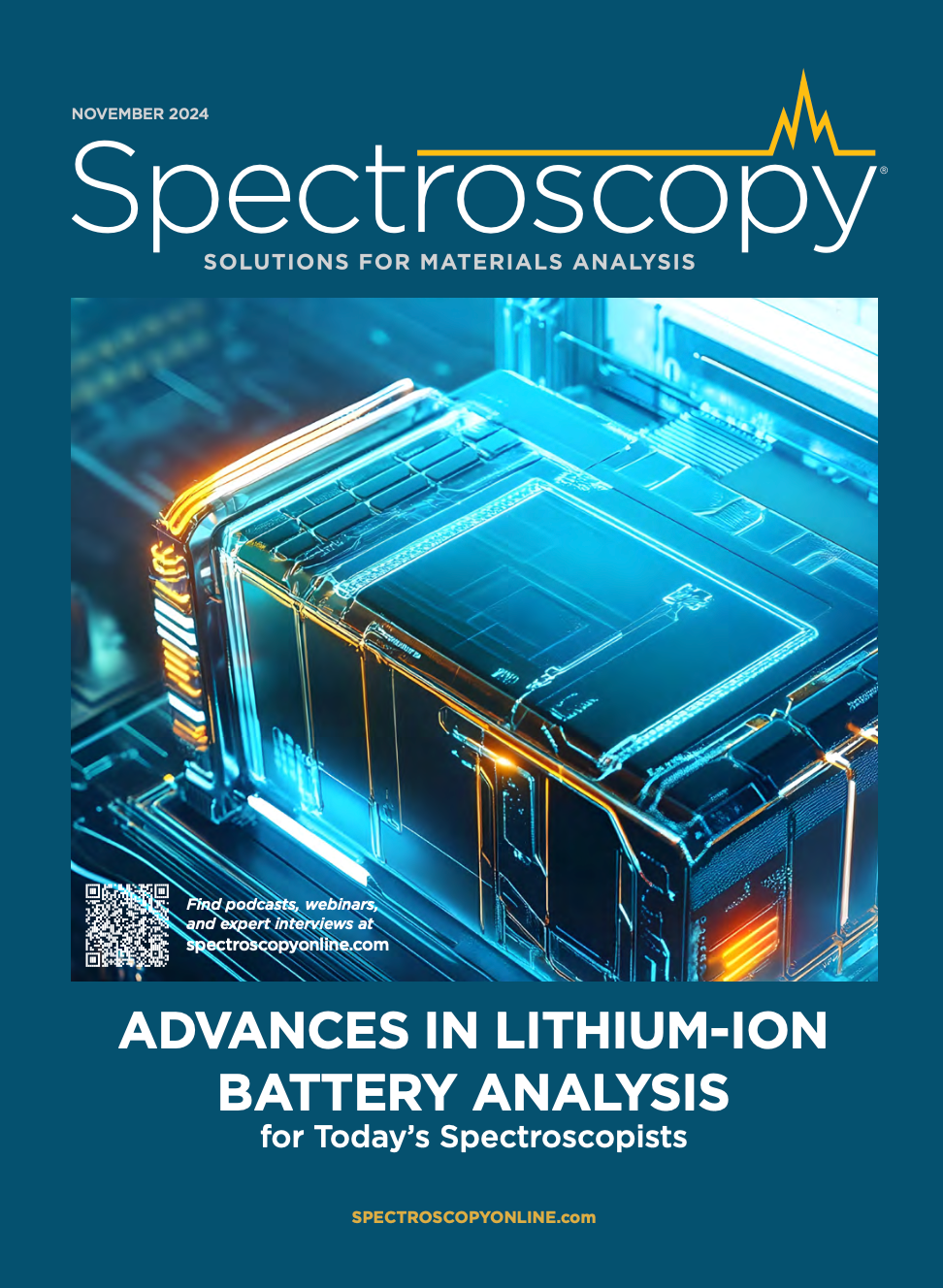Micro-LIBS Device Offers Elemental Insights for Lithium-Ion Batteries
A recent study examines a new micro-laser-induced breakdown spectroscopy (micro-LIBS) device that can provide elemental maps of lithium.
Lithium-ion batteries are essential to powering many of today’s electronic devices. These batteries are used in products such as mobile phones and electric vehicles (1,2). Lithium-ion batteries are seen as an alternative to carbon-based fossil fuels for energy and contribute to the decarbonization push that many nations are working towards globally (3).
To make these batteries more effective, researchers are conducting studies to learn more about the composition and behavior of electrode materials. A recent study from the Université de Lyon, led by Vincent Motto-Ros and published in Spectrochimica Acta Part B: Atomic Spectroscopy, continued this exploration. In their study, the research team introduced a novel application of micro-laser-induced breakdown spectroscopy (micro-LIBS) imaging. This technique holds the potential to transform lithium-ion battery research by mapping lithium and other critical elements at an unprecedented spatial resolution of 2 micrometers (4).
Futuristic Eco Friendly High Capacity Rechargeable Lithium Ion Battery 3D Rendering with Glowing Neon Green Power Icon and Digital Background Technology Concept for Charging and Energy Storage. Generated by AI. | Image Credit: © zong - stock.adobe.com

This study focused on understanding the aging mechanisms of batteries, which can hinder long-term performance. The team developed an advanced micro-LIBS imaging device capable of providing elemental maps of lithium and other materials within battery electrodes at various stages of use (4). The system employed a high numerical aperture (0.42) microscope objective paired with a short-wavelength (266 nm) laser, achieving lateral resolutions down to 2 micrometers (4). This resolution enabled the team researchers to visualize and quantify lithium distribution in better detail, offering new insights into how lithium-ion batteries degrade over time (4).
The degradation of lithium-ion batteries has limited its usage as an alternative source of fuel. With the demand for electricity growing, it is important that lithium-ion batteries and other sources of “green” energy are powerful enough to fulfill that demand (3). In the study, the researchers looked at three samples: a certified aluminum reference, components from a disassembled commercial lithium-ion battery (NMC811/Graphite pouch type), and electrodes mounted in a half-cell configuration (4). These samples underwent preparation, including embedding in epoxy resin and polishing to create mirror-like surfaces essential for precise imaging.
The researchers employed the micro-LIBS system to study lithium intercalation states under different states of charge (SOC): 0%, 50%, and 100% (4). These conditions allowed the team to observe lithium distribution and the formation of inactive lithium sites within negative electrodes. The findings revealed preferential accumulation zones of inactive lithium, a discovery that could inform future improvements in battery design and manufacturing (4).
For their experimental setup, the research team utilized a Q-switched Nd:YAG UV laser operating at a wavelength of 266 nm and a repetition rate of 20 Hz, allowing for rapid imaging (4). The spectral detection relied on two Czerny-Turner spectrometers optimized for UV and visible wavelengths. This configuration enabled precise identification of lithium's spectral lines alongside other elemental signatures (4).
Achieving high resolution is challenging. Although the sensitivity decreases at micrometer scales, the researchers needed to optimize the temporal acquisition window cautiously for signal collection (4). Doing so allowed them to achieve accurate results. Although the study underscores the potential of micro-LIBS imaging in battery research, it also identifies areas for improvement. Long-term stability of laser energy and the precision of translation stages are among the limitations to be addressed in future iterations of the system (4).
Nonetheless, the implications of this technology are vast. The ability to map lithium at micrometer resolution could lead to breakthroughs in battery design, extending the lifespan of devices and improving their energy efficiency. This advancement is particularly critical as industries worldwide strive to meet sustainability goals (4).
Lithium-ion batteries are the key to powering a more sustainable world, and it begins with a clearer understanding of how the materials and manufacturing processes impact battery performance (1,2,4). This study, by providing detailed elemental maps of lithium within electrodes, shows how micro-LIBS systems can evaluate battery chemistries, leading to greater understanding how these types of batteries will perform.
References
- Wetzel, W. Evaluating Battery Health for Electric Vehicles Using Electrochemical Impedance Spectroscopy Measurements. Spectroscopy. Available at: https://www.spectroscopyonline.com/view/evaluating-battery-health-for-electric-vehicles-using-electrochemical-impedance-spectroscopy-measurements (accessed 2024-11-13).
- Wetzel, W. Lithium Metal Batteries and the Push for More Sustainable Electronics. Spectroscopy. Available at: https://www.spectroscopyonline.com/view/lithium-metal-batteries-and-the-push-for-more-sustainable-electronics (accessed 2024-11-13).
- Cho, R. What Is Decarbonization, and How Do We Make It Happen? Columbia University. Available at: https://news.climate.columbia.edu/2022/04/22/what-is-decarbonization-and-how-do-we-make-it-happen/ (accessed 2024-11-13).
- Fernandes, J.; Sorbier, L.; Hermelin, S.; et al. Looking Inside Electrodes at the Microscale with LIBS: Li Distribution. Spectrochimica Acta Part B: At. Spectrosc. 2024, 221, 107047. DOI: 10.1016/j.sab.2024.107047

Laser Ablation Molecular Isotopic Spectrometry: A New Dimension of LIBS
July 5th 2012Part of a new podcast series presented in collaboration with the Federation of Analytical Chemistry and Spectroscopy Societies (FACSS), in connection with SciX 2012 — the Great Scientific Exchange, the North American conference (39th Annual) of FACSS.
New Multi-Spectroscopic System Enhances Cultural Heritage Analysis
April 2nd 2025A new study published in Talanta introduces SYSPECTRAL, a portable multi-spectroscopic system that can conduct non-invasive, in situ chemical analysis of cultural heritage materials by integrating LIBS, LIF, Raman, and reflectance spectroscopy into a single compact device.